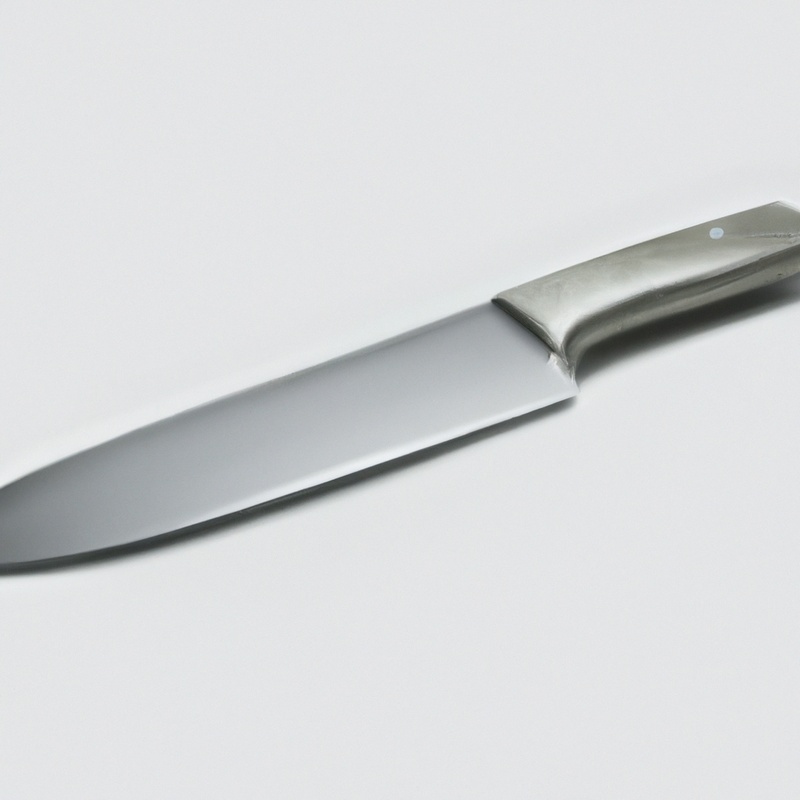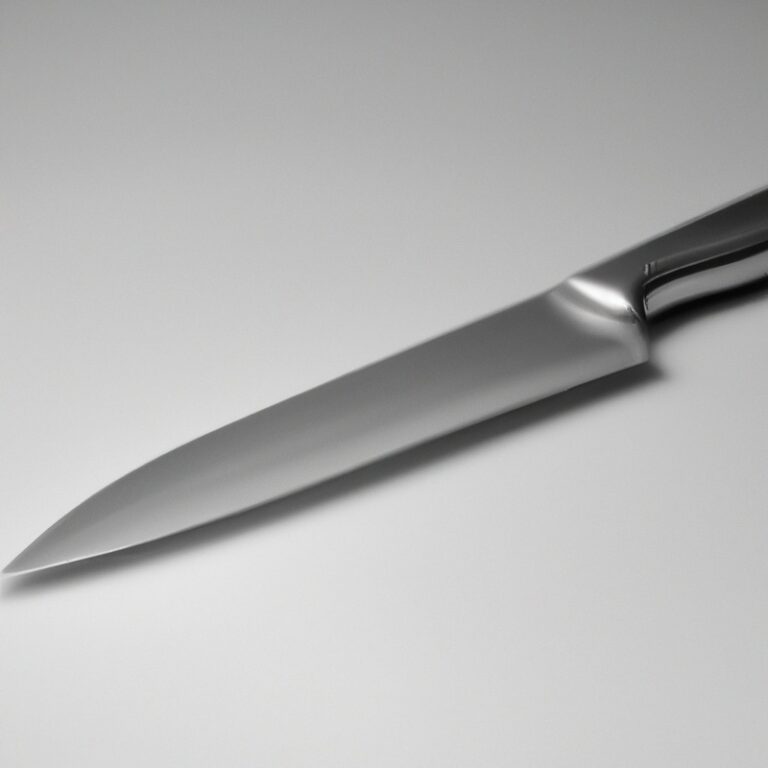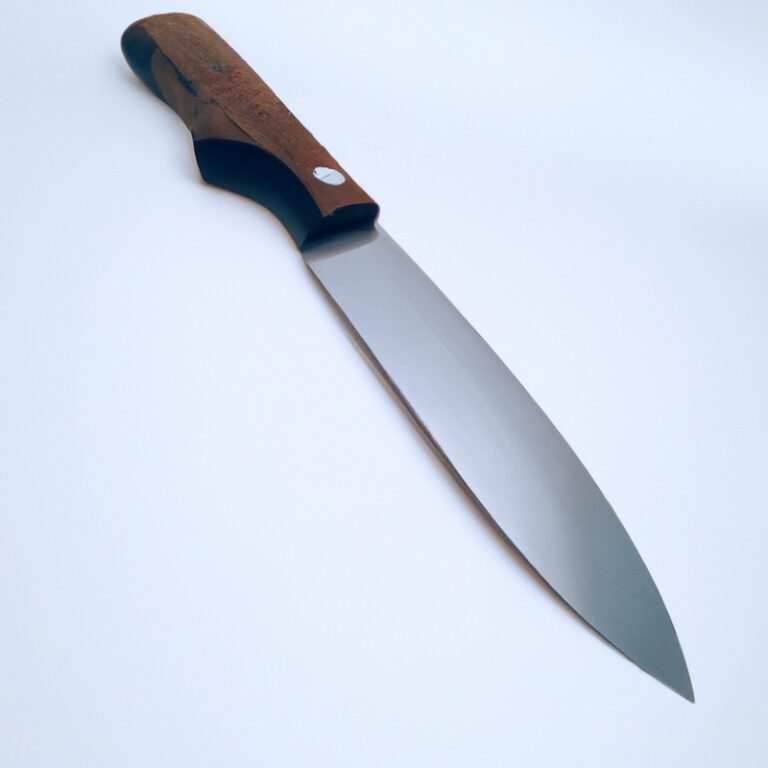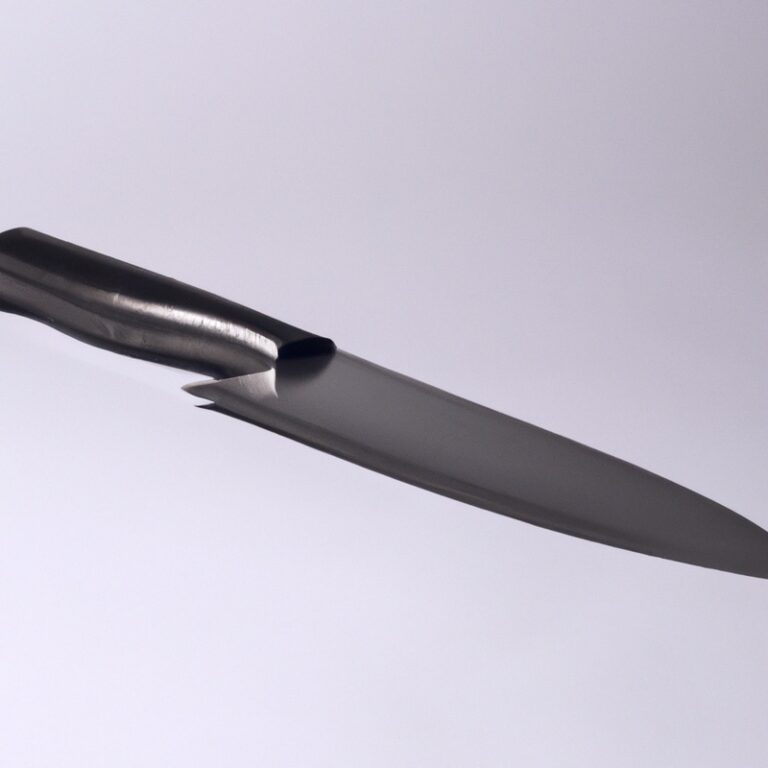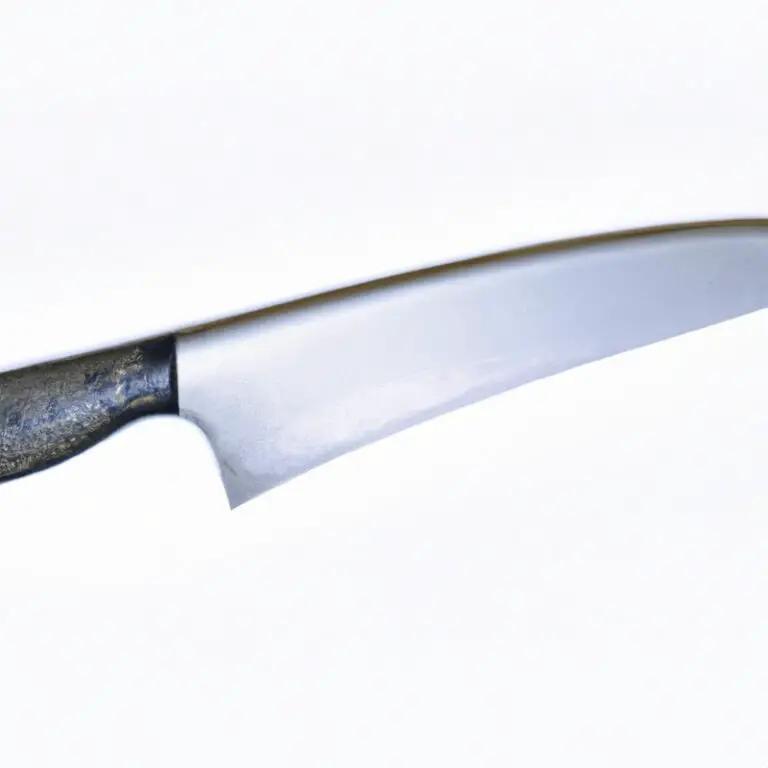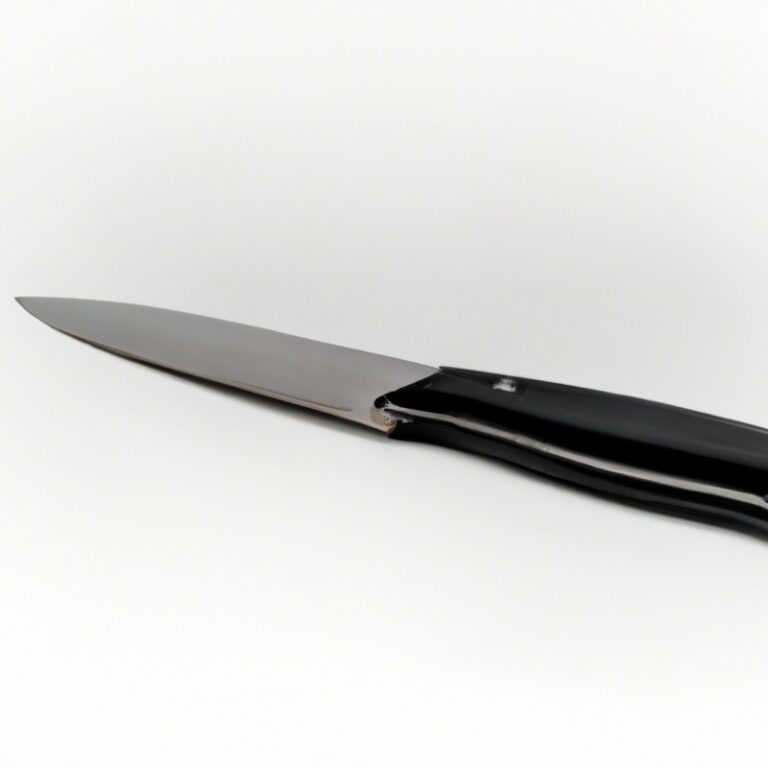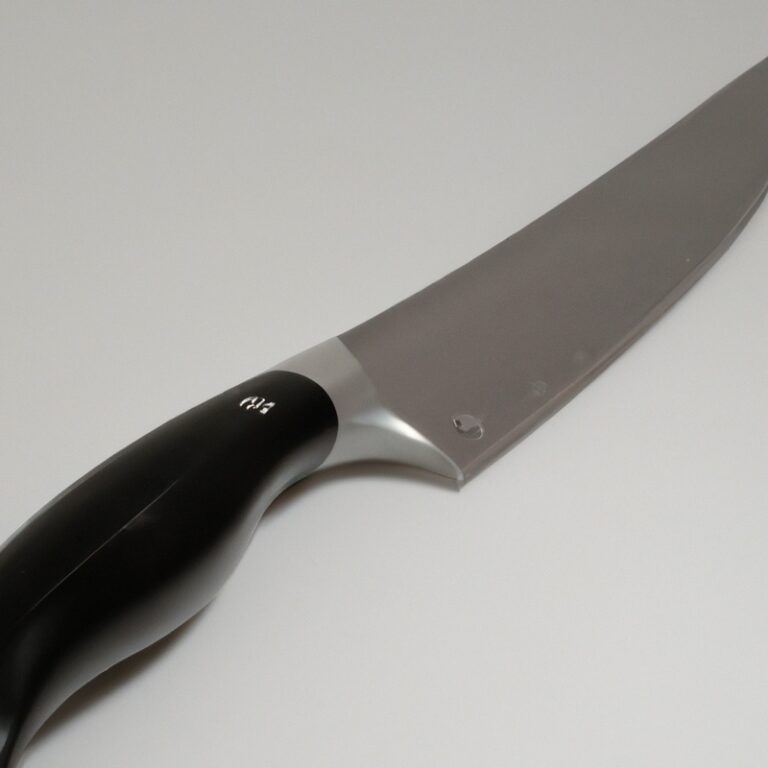What Are The Advantages Of High-Carbon Knife Steel?
Key Takeaways:
- High-carbon knife steel offers exceptional hardness and edge retention.
- It allows for sharper and more precise cutting performance.
- High-carbon steel is more resistant to wear and corrosion.
- It provides better overall durability and longevity for knives.
Have you ever wondered what makes high-carbon knife steel the go-to choice for chefs and knife enthusiasts?
Well, let’s dive into the fascinating world of high-carbon knife steel and explore its unique advantages.
High-carbon steel, known for its exceptional hardness and edge retention, offers enhanced sharpness and cutting performance.
Not only that, it boasts excellent durability and resistance to wear, making it a long-lasting companion in the kitchen.
Plus, high-carbon knife steel provides improved corrosion resistance, ensuring your blades stay in top shape.
So, get ready to learn why high-carbon steel reigns supreme in the realm of knife making!
| Advantages of High-Carbon Knife Steel |
| 1. Excellent Edge Retention |
| 2. Greater Hardness |
| 3. Enhanced Sharpness |
| 4. Better Corrosion Resistance |
| 5. Increased Durability |
What is high-carbon knife steel?
Definition of high-carbon steel
High-carbon steel is a type of steel that contains a higher percentage of carbon compared to other types of steel. While the specific carbon content can vary, high-carbon steel typically contains around 0.6% to 1.4% carbon.
This increased carbon content gives the steel enhanced hardness and strength, making it ideal for applications that require durability and sharpness, such as knives.
High-carbon steel is known for its ability to hold a sharp edge and maintain its shape even under heavy use.
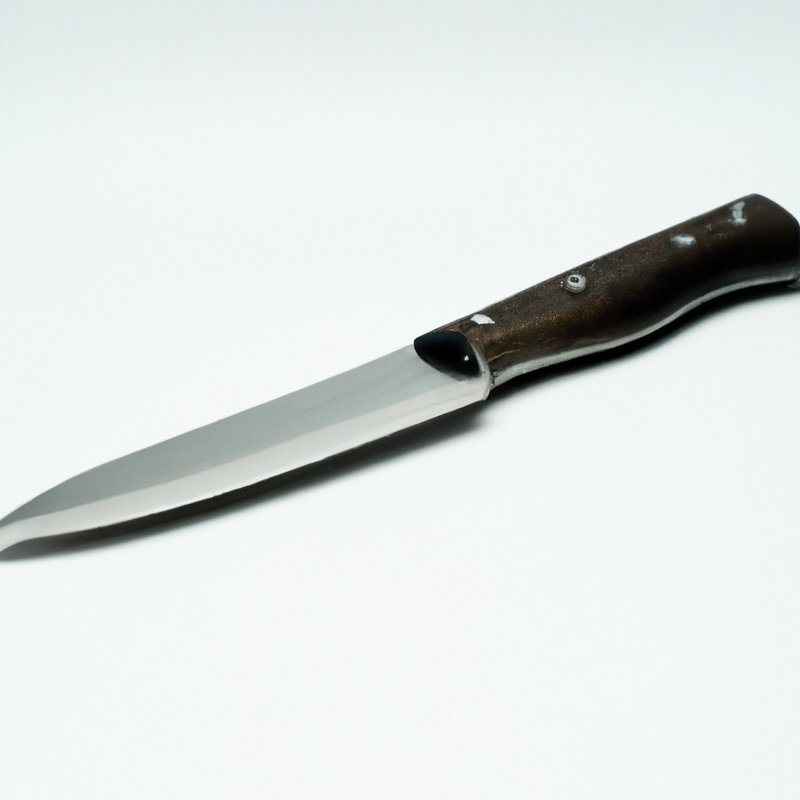
Role of carbon in knife steel
Carbon plays a crucial role in knife steel by determining its hardness and edge retention.
When carbon is added to iron, it forms carbides, which are responsible for the steel’s strength.
A higher carbon content results in a harder and more durable blade, allowing it to maintain a sharp edge for longer periods.
However, high carbon steel is also more prone to oxidation and corrosion, so proper maintenance is essential to prevent rusting.
Overall, carbon is a key component in creating high-performance knife steel.
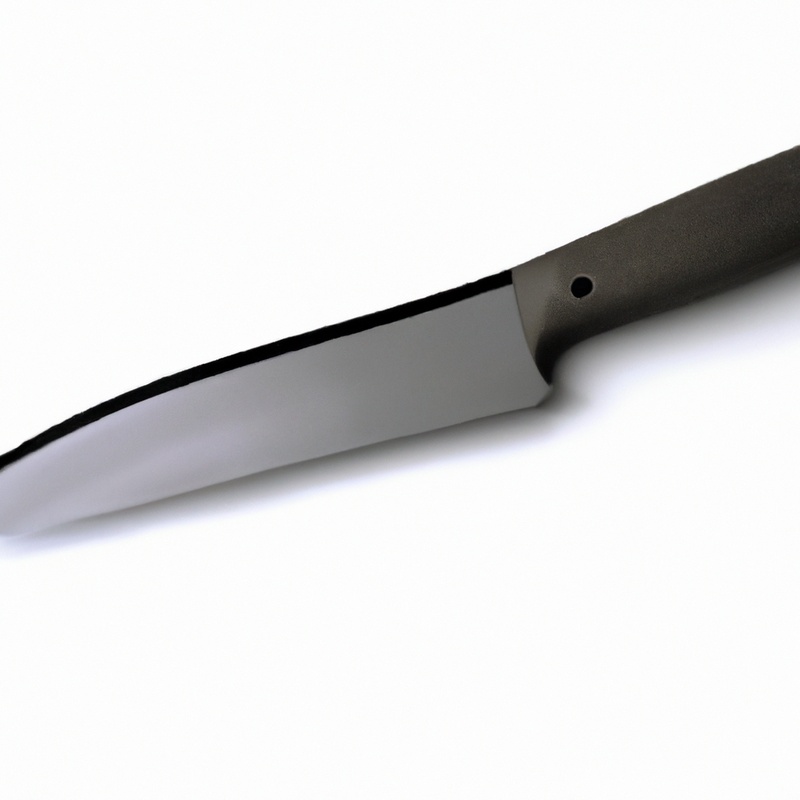
Characteristics of high-carbon knife steel
High-carbon knife steel possesses several key characteristics that make it a popular choice among knife enthusiasts and professionals.
First, it offers exceptional hardness and edge retention, ensuring that the knife stays sharp for longer periods of time.
Second, high-carbon steel allows for enhanced sharpness and cutting performance, making slicing and dicing effortless.
Third, it exhibits excellent durability and resistance to wear, ensuring that the knife can withstand heavy use without losing its effectiveness.
Lastly, high-carbon steel often has improved corrosion resistance, reducing the risk of rust and staining.
Overall, these characteristics make high-carbon knife steel a reliable and versatile option for those seeking high-quality knives.
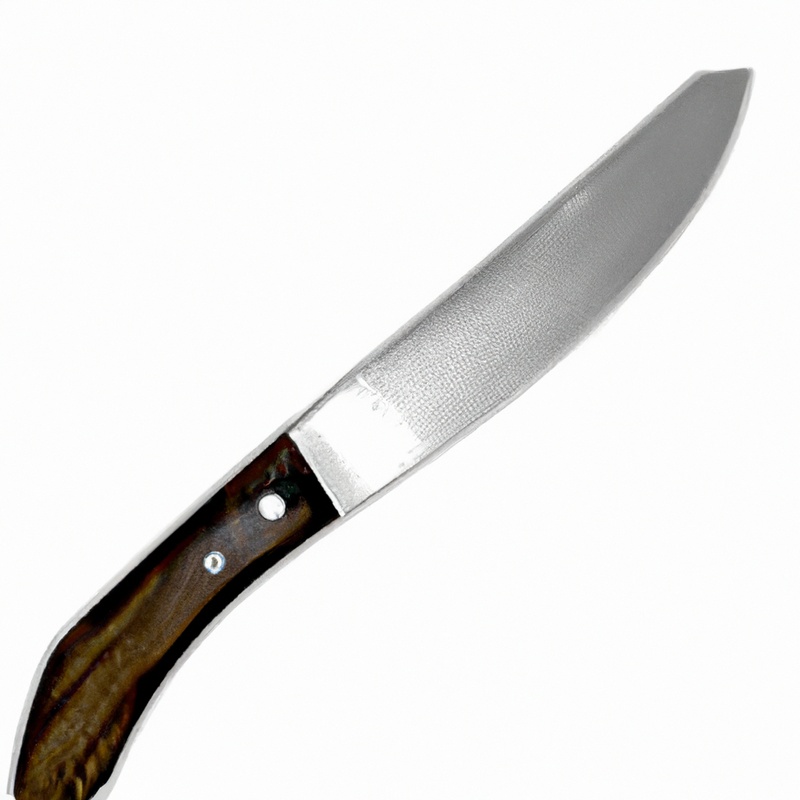
Advantages of high-carbon knife steel
Exceptional hardness and edge retention
High-carbon knife steel offers exceptional hardness and edge retention. The high carbon content allows the steel to achieve a higher level of hardness, making the knife blade more resistant to wear and deformation.
This hardness also contributes to excellent edge retention, meaning that the blade will remain sharp for a longer period of time, reducing the need for frequent sharpening.
With high-carbon knife steel, you can enjoy the benefits of a long-lasting, sharp cutting edge.
Enhanced sharpness and cutting performance
High-carbon knife steel offers enhanced sharpness and cutting performance.
The high carbon content allows the blade to achieve a razor-sharp edge, making precise cuts effortless.
Additionally, the high carbon content improves the knife’s ability to hold its sharpness for longer periods, ensuring consistent cutting performance.
This makes high-carbon knife steel a popular choice among chefs and knife enthusiasts who value precision and efficiency in their cutting tasks.
Excellent durability and resistance to wear
High-carbon knife steel offers excellent durability and resistance to wear.
The high carbon content in these steels makes them incredibly tough and capable of withstanding repeated use and abuse.
They are less prone to chipping or breaking, making them a reliable choice for heavy-duty cutting tasks.
Additionally, high-carbon knife steel exhibits exceptional wear resistance, allowing the blade to maintain its sharpness for extended periods.
This means less time spent on regular sharpening and more time enjoying precise and efficient cutting performance.
Improved corrosion resistance
High-carbon knife steel offers improved corrosion resistance compared to other types of steel. This means that the knife is less likely to rust or corrode over time, even when exposed to moisture or acidic substances.
The higher carbon content in the steel helps to create a protective layer that prevents oxidation and corrosion.
As a result, high-carbon knives require less maintenance and can withstand harsher conditions without losing their performance or longevity.
High-carbon knife steel types
Popular high-carbon knife steels
Some popular high-carbon knife steels include:
- C: A stainless steel known for its excellent corrosion resistance and good edge retention.
- AUS-8: Has good toughness, hardness, and wear resistance, making it suitable for everyday use.
- VG-10: A high-quality stainless steel that offers excellent sharpness, edge retention, and corrosion resistance.
- D2: Known for its exceptional hardness and wear resistance, making it popular among professional chefs and knife enthusiasts.
- : A classic carbon steel with high hardness and edge retention, but requires regular maintenance to prevent corrosion.
These steels vary in their properties and suitability for different applications, so it’s important to choose one that matches your needs and preferences.
Comparing different high-carbon knife steels
When comparing different high-carbon knife steels, there are a few key factors to consider.
Firstly, the carbon content affects the hardness and edge retention of the steel.
Higher carbon content generally results in a harder blade.
Secondly, the presence of other alloying elements, such as chromium and vanadium, can enhance the steel’s corrosion resistance and toughness.
Lastly, the specific heat treatment and forging processes used can also impact the overall performance of the steel.
It’s important to research and understand these factors in order to choose the right high-carbon knife steel for your needs.
Choosing the right high-carbon knife steel
When choosing the right high-carbon knife steel, there are a few key factors to consider. Firstly, think about the specific tasks you’ll be using the knife for.
Different steels excel in different areas, such as edge retention or corrosion resistance.
Secondly, consider your skill level and maintenance abilities. Some high-carbon steels require more care and regular sharpening.
Finally, research popular high-carbon steel types and read reviews to get a sense of their performance and durability.
By considering these factors, you can choose a high-carbon knife steel that suits your needs and preferences.
Maintenance tips for high-carbon knives
Proper cleaning and drying techniques
To ensure the longevity and performance of your high-carbon knives, proper cleaning and drying techniques are essential. Here are some tips to keep in mind:
- Hand wash: Always clean your knives by hand using warm water and a mild dish soap. Avoid using abrasive sponges or steel wool as they can damage the blade.
- Dry immediately: After washing, thoroughly dry the knife with a soft cloth or towel. Moisture can lead to rusting and corrosion, so make sure to remove all excess water.
- Avoid soaking: Do not soak your high-carbon knives in water or leave them wet for an extended period. This can compromise the steel’s quality and sharpness.
- Never air dry: Do not leave your knives to air dry as this can promote moisture build-up. Instead, take the time to dry them immediately after washing.
- Store properly: Store your high-carbon knives in a knife block, sheath, or on a magnetic strip to protect the blade and prevent damage. Make sure they are completely dry before storing to avoid moisture-related issues.
Regular honing and sharpening
Regular honing and sharpening is essential for maintaining the performance and longevity of high-carbon knives. Honing, using a honing rod or steel, helps realign the edge of the blade, keeping it sharp between sharpenings.
Sharpening, on the other hand, involves removing material from the blade to create a new, sharp edge.
Depending on usage, high-carbon knives may need to be honed and sharpened every few weeks or months. It’s crucial to use the appropriate honing and sharpening tools, follow the correct technique, and be mindful of the knife’s angle to achieve optimal results.
Storing high-carbon knives
Storing high-carbon knives is important to maintain their quality and prevent damage.
Here are some tips to help you store your knives properly:
- Use a knife block or magnetic strip: These options keep your knives upright and secure, preventing them from rubbing against other utensils and getting dulled or chipped.
- Consider a knife sheath or blade guard: These protective covers provide an extra layer of protection for your knives, especially if you need to store them in a drawer or transport them.
- Keep knives dry: Moisture can cause rust and corrosion, so make sure your knives are completely dry before storing them. Avoid leaving them in damp areas, such as the sink or dishwasher.
- Store knives in a cool, dry place: High humidity or extreme temperatures can also damage the blades. Find a spot in your kitchen that is away from direct heat sources and has good air circulation.
Professional perspectives on high-carbon knife steel
Chefs’ preferences for high-carbon knife steel
When it comes to chefs’ preferences, many professionals opt for high-carbon knife steel. Why?
Well, high-carbon steel offers exceptional hardness and edge retention, which means your knife stays sharper for longer.
Plus, the enhanced sharpness and cutting performance make it a favorite among chefs who value precision in their work. Additionally, high-carbon steel offers excellent durability and resistance to wear, ensuring your knife will last through countless chopping sessions.
And let’s not forget about improved corrosion resistance – a crucial aspect for those working in a fast-paced kitchen environment.
Overall, it’s no wonder why chefs prefer high-carbon knife steel for their culinary adventures.
Opinions from knife enthusiasts and experts
Knife enthusiasts and experts highly regard high-carbon knife steel for its exceptional performance and edge retention.
They appreciate its ability to achieve razor-sharp edges and maintain them for extended periods of use.
Additionally, they value the durability and resistance to wear that high-carbon steel offers, making it an excellent choice for heavy-duty cutting tasks.
Furthermore, experts note that high-carbon knife steel can be easier to sharpen and holds up well against corrosion when properly maintained.
Overall, the opinions of knife enthusiasts and experts emphasize the advantages of high-carbon knife steel in terms of performance, durability, and versatility.
Key considerations when using high-carbon knife steel
Regular maintenance requirements
Regular maintenance is essential for preserving the performance and longevity of high-carbon knife steel.
To keep your knives in optimal condition, I recommend the following maintenance requirements:
- Clean and dry your knives immediately after each use to prevent corrosion and staining. Use mild soap, warm water, and a non-abrasive sponge or cloth. Avoid placing them in the dishwasher.
- Regularly hone your high-carbon knives to maintain their sharpness. A honing steel or ceramic rod can help realign the blade edge, ensuring precise cutting.
- Sharpen your knives periodically to restore their cutting edge. You can use whetstones or sharpening systems to achieve the desired sharpness. Take your time and follow the manufacturer’s instructions for best results.
- Store your high-carbon knives properly to prevent damage. Consider investing in a knife block, sheath, or magnetic strip to keep them protected and organized. Avoid storing them loosely in a drawer where they can suffer from contact with other objects.
Potential challenges and drawbacks
One potential challenge of using high-carbon knife steel is its susceptibility to corrosion. Due to the higher carbon content, these knives can be more prone to rust and discoloration if not properly cared for.
Regular maintenance and proper cleaning techniques are essential to prevent this issue.
Another drawback is the increased difficulty in sharpening high-carbon knives. The hardness of the steel can make it more challenging to achieve a sharp edge, requiring more time and skill during the sharpening process.
It’s important to keep these factors in mind when considering high-carbon knife steel.
Final Verdict
High-carbon knife steel offers a range of advantages that make it a top choice for professional chefs and knife enthusiasts alike. Its exceptional hardness and edge retention, enhanced sharpness and cutting performance, excellent durability and resistance to wear, and improved corrosion resistance make it a superior choice for those who demand the highest quality in their knives.
While regular maintenance is required to keep these knives in top condition, the benefits far outweigh the challenges.
Trust me, investing in high-carbon knife steel will elevate your cooking experience and ensure precision and longevity in your cutting tools.

